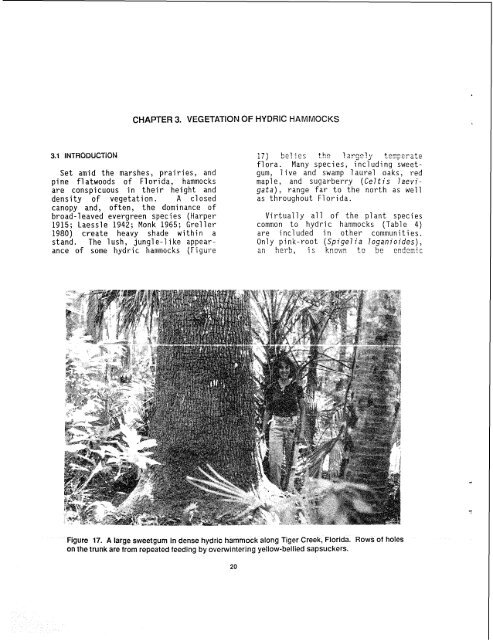The Ecology of Hydric Hammocks - USGS National Wetlands ...
The Ecology of Hydric Hammocks - USGS National Wetlands ...
The Ecology of Hydric Hammocks - USGS National Wetlands ...
Create successful ePaper yourself
Turn your PDF publications into a flip-book with our unique Google optimized e-Paper software.
CHAPTER 3. VEGETATION OF HYDRIC HAMMOCKSSet amid the marshes, prairies, andpine flatwoods <strong>of</strong> Florida, hammocksare conspicuous in their height anddensity <strong>of</strong> vegetation. A closedcanopy and, <strong>of</strong>ten, the dominance <strong>of</strong>broad-1 eaved evergreen species (Harper1915; Laessle 1942; Monk 1965; Greller1980) create heavy shade within astand. <strong>The</strong> lush, jungle-1 i ke appearance<strong>of</strong> some hydric hammocks (Figure17) t;e::c; 5 !1~152?y tc~pcra:eflora. Many species, including sweetgum,live and swamp laurel oaks, redmap1 e, and sugarberry (Celtis laevigata),range far to the north as wellas throughout Florida.Virtually all <strong>of</strong> the plant speciescommon to hydric hammocks (Table 4)are included in other communities.Only pink-root (Spigel ia loganioides),an herb, is known to bc en3ccicFigure 17. A large sweetgum in dense hydric hammock along Tiger Creek, Florida. Rows <strong>of</strong> holesOn the trunk are from repeated feeding by overwintering yellow-bellied sapsuckers.20

















